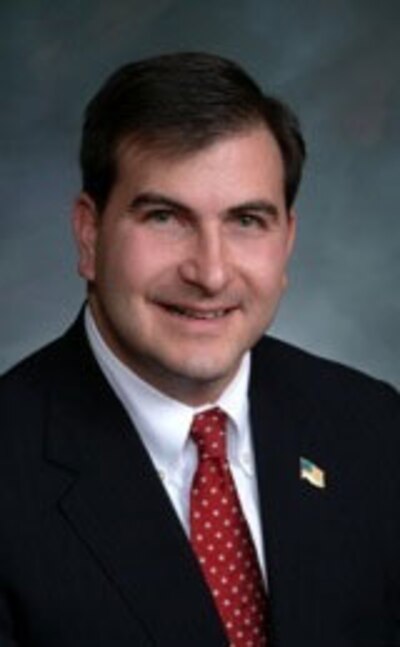State revenues look better than forecast three months ago, indicating the proposed cuts to K-12 spending, higher education and other programs might be a bit less than previously expected – but probably not by much.
Economists from the Legislative Council staff and the executive branch Office of State Planning and Budgeting issued their March forecasts to the Joint Budget Committee and other lawmakers Friday afternoon. The official forecasts are made quarterly.
Committee members were cautious about the news.
“We will still see significant cuts. This gives us a little breathing room.” said Rep. Mark Ferrandino, D-Denver.
“We can’t get too optimistic about increases in spending,” said Sen. Kent Lambert, R-Colorado Springs.
Henry Sobanet, director of OSPB, said, “A faster-than-expected rebound of income tax is expected to bring an additional $161.3 million into state coffers this fiscal year.” Sobanet said much of that increase may be one-time.
Legislative chief economist Natalie Mullis, whose estimate of increased revenue was somewhat lower, noted that $40 million of the increase was attributable to a single taxpayer who paid delinquent taxes.
Sobanet said the forecast is close to the assumptions used when the administration made its 2011-12 budget proposals last month, so it isn’t known yet which if any proposed cuts can be scaled back.
“Gov. Hickenlooper’s first choice for scaling back reductions would be in K-12 education,” he said.
On Feb. 15 Gov. John Hickenlooper proposed $332 million in cuts from current total program funding for K-12 education. He also suggested $519 million in state support for colleges and universities, down from the $555 million that had been requested. (Overall higher education revenues of roughly $2 billion, the majority of which comes from tuition, are projected to be down at least $30 million.)
Both Sobanet and Mullis agreed that the “structural deficit” in the state’s general fund has shrunk from about $1.1 billion to about $450 million, because of the revenue increase and cuts that already have been made.
Sobanet warned that eliminating the structural gap will require further cuts in the 2012-13 budget year. Solving the problem is “going to take two years.” The structural gap refers to the difference between state revenues and state spending commitments, which are driven by such things as school and college enrollment, Medicaid caseload and other demands. Inflation also is a factor. That’s illustrated, as Sobanet noted, by the fact that Hickenlooper’s proposed 2011-12 budget is 3.6 percent lower than state spending in 2007-08. If the revenue portions of Hickenlooper’s plan are removed, the difference is 8.1 percent.
Legislative Democrats have been working to reduce K-12 cuts and are eying several tactics, including setting a smaller-than-normal state reserve, diverting actual revenues in excess of forecasts to education, taking funds from other state programs and a tax amnesty, with additional taxes collected from that going to education.
Even a bill that would create an income tax check-off for education has been suggested, and one Democratic senator is pushing for a November ballot measure that would raise state income and sales taxes for three years to fund schools and colleges.

Senate President Brandon Shaffer, D-Longmont, has led the search for more education money. He said Friday, “Today’s news is encouraging, but we are in very challenging economic times and we have a lot of work ahead of us to balance the state budget. I appreciate Gov. Hickenlooper’s desire to put extra funding toward education.”
Unveiling of the revenue forecasts kicks off several weeks of work on budget issues. The 2011-12 budget bill is expected to be introduced in the Senate on March 28, with the annual school finance bill, which is the mechanism through which school funding is trimmed, following a week later.
Some lawmakers asked how the Japanese disasters, Middle Eastern unrest, rising commodity prices and inflation could affect the forecast’s conclusion that economic growth will continue, albeit slowly.
“We are continuing to monitor all economic indicators.” Sobanet said. “There are heightened risks,” said OSPB economist Jason Schrock.
The two forecasts usually differ in details because of different assumptions and conventions used by the two sets of economists. A third group, the staff of the JBC, analyzes the two reports and issues its own updated general fund overview, which the committee uses in its budget-writing work. That’s expected to be presented to the members on Monday.
Total state spending is about $20 billion a year, but that includes federal funds, cash revenues and earmarked programs that the legislature doesn’t control. The general fund covers about $7 billion in spending a year and is the legislature’s main focus. Nearly half of the general fund is devoted to education.
The forecasts contain a wealth of broader data about the state’s economy, including reviews of different industries and regions of the state. It’s good information if you’re interested in the possible future direction of the economy. The chart to the right, taken from the Legislative Council forecast, shows key economic indicators from 2006 to 2010 and forecasts through 2013.
Resources
Background
- Article on December 2010 forecasts, Legislative Council forecast, OSPB forecast
- Article on September 2010 forecasts
